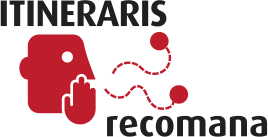Ballarina, performer i coreògrafa, Aina Alegre és una artista de Vilafranca del Penedès que viu entre la capital catalana i París i que, després d'haver entrat a formar part del CNDC d’Angers l'any 2007, va iniciar una carrera brillant que la va dur a crear la seva pròpia companyia, STUDIO FICTIF i, des del gener d'enguany, a dirigir el Centre Chorégraphique National de Grenoble, juntament amb l’intèrpret Yannick Hugron. Alegre, que entén la dansa com un terreny en el qual "reimaginar" el cos, ha explorat en les seves creacions diverses cultures i pràctiques corporals, de les quals examina el paper històric i antropològic inspirant-se tant en obres plàstiques, com sonores i audiovisuals. I si en les últimes coreografies ha experimentat amb el so i la música en relació amb el cos, a THIS IS NOT «an act of love & resistance» l'artista centra la coreografia en aquest element que ens envolta i està present de manera permanent, encara que ni el veiem ni en siguem conscients: l'aire i la dependència que tenen els cossos per l’interior dels quals circula de manera permanent.
Com generar energia mitjançant aquest element i com podem respirar col·lectivament? Si l'aire portés presagis, quins imaginaris i representacions del futur en sortirien? S'ho pregunta Aina Alegre amb el gest, el moviment i el so. Un univers sensorial híbrid envolta els espectadors i espectadores. L'ha imaginat un còmplice habitual de la coreògrafa, el músic i compositor Josep Tutusaus, creador de paisatges sonors electrònics que també ens fa vibrar amb la música en directe dels metalls inspirada en les brass bands. Tot, per imaginar, sota una il·luminació obra de Jan Fedinger, com els cossos creen vincles entre ells i replantejar, així, el concepte de comunitat.
THIS IS NOT (an act of love & resistance) és la nova creació d'Aina Alegre, una artista que hem vist a Barcelona, com a part de la programació de Dansa Metropolitana en espais com la desapareguda Sala Hiroshima (d'on va ser artista associada) i al Mercat de les Flors, defensant peces com LA NUIT, NOS AUTRES o com R-A-U-X-A, que, juntament amb Concrerto, es troben entre les últimes creacions. L'estrena de la peça coincideix amb el nomenament recent de la ballarina i coreògrafa barcelonina com a codirectora, juntament amb el ballarí Yannick Hugron, del Centre Chorégraphique National de Grenoble, en substitució de Yoann Bourgeois.
Una coproducció del Centre Chorégraphique National de Grenoble i el Grec2023 Festival de Barcelona.
Altres coproductors i associats: STUDIO FICTIF (Claire Nollez, Romain Courault, Clémence Padou); December Dance (Cultuurcentrum and Concertgebouw Brugge), Bèlgica; Mercat de les Flors, Barcelona – artista associada 2022 & 2023; La Rose des Vents, Scène nationale Lille Métropole Villeneuve d'Ascq; Le Manège, scène nationale de Maubeuge; La Place de la Danse CDCN Toulouse Occitanie; La Briqueterie CDCN du Val-de-Marne; Théâtre et cinéma de Choisy-le-Roi Scène conventionnée; Theater Freiburg, Germany; Transfabrik Fund – Franco-German Fund for the Performing Arts, Atelier de Paris / CDCN.
Amb el suport del Patronage Caisse des Dépôts ; DRAC Île-de-France; Département du Val de Marne; Région Île-de-France; Adami, organització per a la gestió dels drets dels artistes; SACD stage music fund; CNDC, Angers; The Centre chorégraphique national de Grenoble is financed by Drac Auvergne – Rhône-Alpes/Ministère de la culture et de la communication Grenoble-Alpes Métropole, Département de l’Isère, Région Auvergne – Rhône-Alpes.




